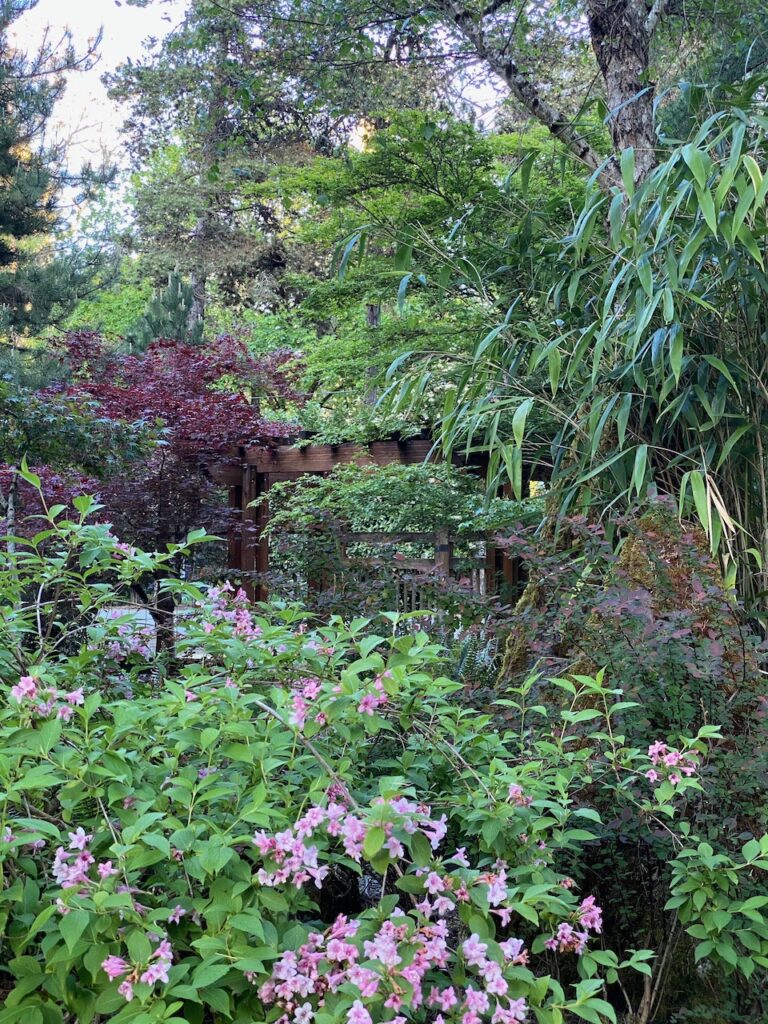
Japanese Garden
The Japanese Garden creates harmony with nature through the use of plants, stones, and water. Serenity and peaceful beauty emerge, offering quiet places to meditate, and contemplate.
Important Aspects:
- Use existing landscape as element (i.e. visually frame with archway)
- Water – ponds, streams, waterfalls (can mimic with rock formation)
- Bridges – slabs of stone, arches
- Stone lanterns
- Stones – used as design element, jutting from water or raked sand garden
- Sand – raked like flowing water or simple straight lines
- Pathway – curve around special features, directing visitor through the garden
- Empty spaces – avoid overcrowding, keep it simple
Located at the far eastern end of the Discovery Garden is a space created to draw the visitor into a different world. Intended as a place for quiet contemplation and serenity, such a landscape demands simplicity and muted colors, predominantly populated by evergreen plants. Hardscape elements such as a brass gong, stone pagoda, a moon gate, curving pathways that direct the visitor through the garden, a Tea House with simple lines, and stones that jut out of the foliage all enhance the oriental theme. Three ferro-cement “mountains”, nestled among the towering birch trees, were built by Master Gardeners trained in the art. Water, a traditional element in Japanese gardens, is mimicked here instead with a dry “river” of smooth river rocks.

Among some visitors from Roseburg’s sister city, Shobu, Japan, was Chiaki Koyama, an expert gardener with three doctoral degrees in horticulture. Through collaboration with Master Gardener Wiley Wood from Roseburg, they planned to construct a Japanese-theme garden here in 1998. Construction began in 2000, led by Mr. Koyama and Master Gardener volunteers. Mr. Koyama returned various times as an instructor and demonstrator of the art of Japanese pruning. In 2012 Mr. Koyama was again visiting the Discovery Garden, and was honored by the unveiling of a Japanese letter sculpture made by Master Gardener Fred Alley. The lettering of the sculpture signifies “Harmony, Peace, and Contemplation”.
Through the use of evergreen plants and trees, the garden can be viewed any time of the year, though spring and early summer are the best.
Plants you will find in the garden are pines, cedars, Japanese maples, rhododendrons, azaleas, flowering cherry, dogwood, bayberry, American red bud, pieris, birch, arborvitae, winterberry, grasses and bamboo.





